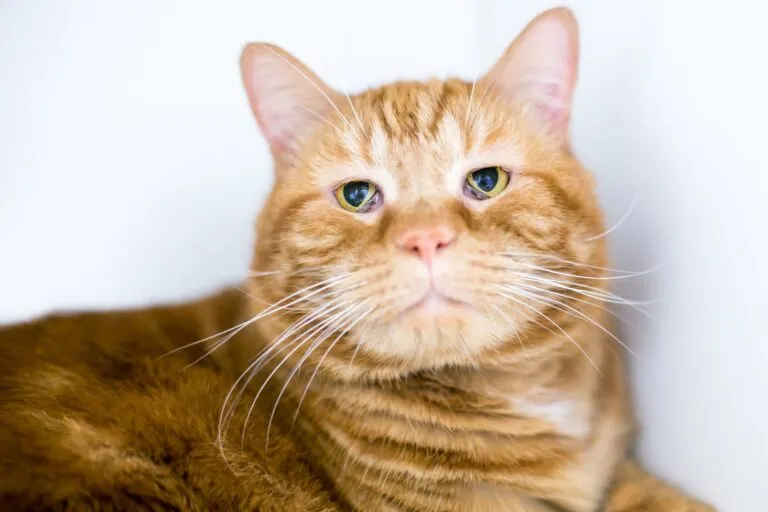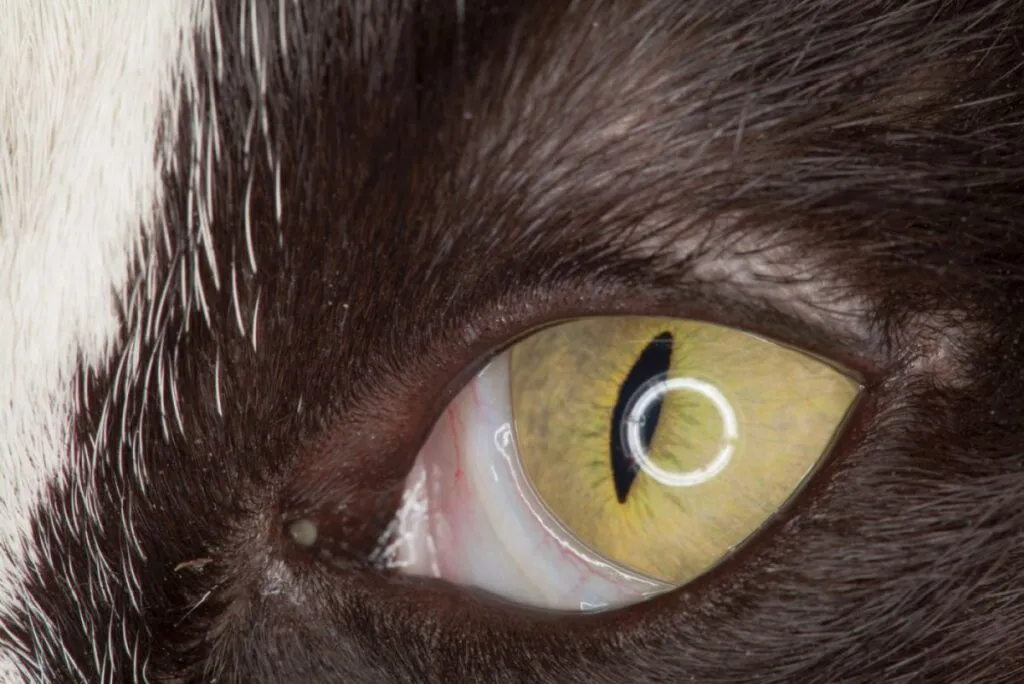A cat’s eyes are complex and closely connected to other bodily structures. Hence, various diseases can cause a third eyelid prolapse in cats.
Haw Syndrome
The Haw Syndrome is known to cause bilateral third eyelid prolapse in cats. Several possible causes are under discussion, but the most frequently debated are:
- Gastrointestinal problems: Chronic diarrhoea and the resulting release of so-called endotoxins can be a cause for the Haw Syndrome in cats.
- Infestation with worms: The body’s immune response following a worm infestation can lead to innervation disorder of the eye, disrupting the nerve tissue supply to the organ.
Feline Dysautonomia (Key-Gaskell Syndrome)
This represents a rare, congenital dysfunction of the nervous system that particularly occurs in designer breeds. The syndrome causes various symptoms in affected cats, including bilateral third eyelid prolapse.
Inflammations and Infections
Any type of eye inflammation can induce a third eyelid prolapse in cats. This primarily includes conjunctivitis (Conjunctivitis). A well-known trigger in young cats is the cat flu.
Injuries or Tumours
If your cat roams the local woods and fields as an indoor/outdoor cat, it’s easy for a splinter or similar foreign body to penetrate its eye.
Such foreign bodies, as well as tumours on the eyes, can cause injuries and thus contribute to a third eyelid prolapse in cats.
Idiopathic Third Eyelid Prolapse in Cats: How Long Does It Last?
Sometimes a third eyelid prolapse occurs without any apparent trigger. In such cases, however, the prolapse typically heals on its own within six to eight weeks.

